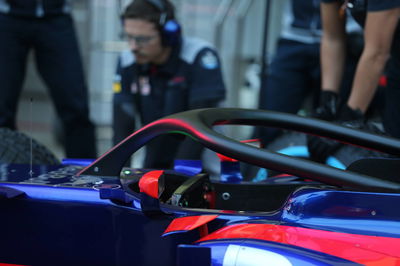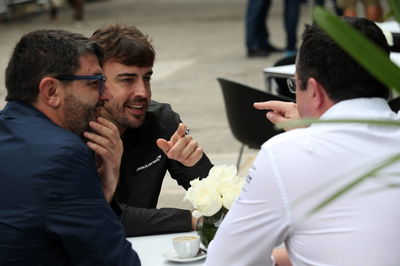F1 halo opens ‘interesting avenues’ for short-term aero gains
McLaren’s chief of aerodynamics Peter Prodromou says the installation of the new Halo safety device will provide short-term chances for performance jumps in Formula 1 at the start of 2018.
Prodromou has confirmed McLaren’s MCL33 has passed all FIA safety tests at its first attempt including new tests for the Halo cockpit protector which becomes a mandatory safety piece for F1 cars this year.

McLaren’s chief of aerodynamics Peter Prodromou says the installation of the new Halo safety device will provide short-term chances for performance jumps in Formula 1 at the start of 2018.
Prodromou has confirmed McLaren’s MCL33 has passed all FIA safety tests at its first attempt including new tests for the Halo cockpit protector which becomes a mandatory safety piece for F1 cars this year.
While the challenges faced integrating the Halo efficiently has ‘excited’ the engineering brains at McLaren, Prodromou predicts a variety of different fairings experimented with by F1 teams when getting up to speed with the new device.
The McLaren aerodynamics boss believes any F1 team could find a performance gain tweaking the aero impact of the Halo regarding air intake for the engine as well as added downforce potential.
“Aero wise it is certainly not penalty free and I think there is a challenge to either cope with it in the first insistence, let’s call it damage limitation,” Prodromou said. “Thereafter I think it is about opportunity and exploitation. It does open up some avenues which are possibly interesting to look out.
“I am sure there will be a variety of different solutions out there but the scope is quite limited to the allowance around the basic shape but there is opportunity there.
“Everyone is going to be faced with how it impacts the flow into the engine and the flow into certain cooling ducts in that area, including ourselves, as well as the flow to the rear wing. On the flipside there may be opportunities to tap into which you couldn’t before.”
However, Prodromou has played down the lasting advantage of the Halo in terms of aerodynamic performance as he expects all F1 teams to catch-up with each other by the middle of the 2018 season.
“The advantage is likely to be short-lived with the rest of the field catching up midway through the season,” he said. “I’d probably give it half a season and I imagine everyone will have converged, that would be my rough guess.”
In IndyCar, an alternative to the Halo - the windscreen - has passed its first tests on track at Phoenix last Thursday which is made of a proprietary Opticor advanced transparency material used to produce fighter jet canopies. It passed initial tests on how it impacted vision through the prototype in varying light conditions.











